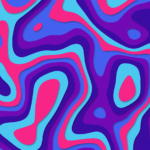Have you ever wondered why words appear reversed when you look at them in a mirror? This phenomenon has fascinated people for centuries, leading to theories, experiments, and even artistic expressions. The concept of mirror writing, or the reversal of text in a mirror, is a result of how light behaves when it reflects off a surface. In this blog post, we’ll delve into the science behind this optical illusion and explore how light reflection works in a way that’s easy to understand.
Understanding the Basics of Light Reflection
Before we dive into the mystery of mirror writing, let’s first understand the fundamental principles of light reflection. Light reflection occurs when light bounces off a surface. The way it bounces depends on the type of surface. For example, smooth surfaces like mirrors reflect light more coherently, while rough surfaces scatter light in various directions, creating a diffuse reflection.
The law of reflection is a key principle in optics that explains how light interacts with surfaces. According to this law:
- The incoming light ray, the reflected light ray, and the normal (a perpendicular line to the surface at the point of incidence) lie in the same plane.
- The angle of incidence (the angle between the incoming light ray and the normal) is equal to the angle of reflection (the angle between the reflected light ray and the normal).
These principles are essential in understanding how mirrors work and why we see objects in a particular way when looking at them.
The Science Behind Mirror Writing
Mirror writing is a classic example of how light reflection can change our perception of objects. When you write a word on a piece of paper and hold it in front of a mirror, the letters appear to be reversed. This is because the light reflecting off each letter is being redirected at different angles.
Let’s break this down step by step:
-
The Original Writing: Imagine you write the word “HELLO” on a piece of paper. Each letter is facing forward, and the light from the surrounding environment hits the paper and reflects off to your eyes, allowing you to see the word clearly.
-
The Mirror’s Surface: When you hold the paper in front of a mirror, the light that reflects off each letter now bounces off the mirror’s surface. According to the law of reflection, the angle at which the light hits the mirror is the same as the angle at which it bounces back.
-
Reversal of Light Rays: The mirror reflects the light rays in such a way that the entire image is reversed. This reversal is not just horizontal; it also affects the light rays that carry the information about the text.
-
The Result: The light rays from each letter are now reordered, causing the word to appear reversed. So, instead of seeing “HELLO,” you see “OLLEH” in the mirror.
This phenomenon is not just limited to text; it’s a fundamental property of mirrors and light reflection. When you look at yourself in a mirror, you’re seeing a mirror image of yourself, which is also reversed, but our brains are so accustomed to it that we perceive it as normal.
The History of Mirror Writing
The concept of mirror writing has been around for centuries and has been explored in both science and art. One of the most famous examples of mirror writing is found in the works of Leonardo da Vinci. Da Vinci often wrote his notes in mirror writing, a technique known as “specular writing,” where the text could only be read when held up to a mirror. This was a clever way to protect his ideas from being easily read by others.
The use of mirror writing has also been documented in various forms of secret communication. For instance, during the Renaissance, some spies and secret societies used mirror writing to convey hidden messages. The recipient of such a message would need a mirror to decode it, adding an extra layer of security.
In modern times, mirror writing has become a subject of fascination for both scientists and the general public. The ability to reverse text using mirrors has been used in optical illusions, magic tricks, and even in the creation of certain types of art.
How to Create Mirror Writing
If you’re curious about how to create your own mirror writing, here’s a simple guide to help you get started:
- Choose a Word or Phrase: Start by writing a word or phrase on a piece of paper. The simpler the word, the easier it will be to see the effect.
- Use a Mirror: Hold the paper in front of a mirror. Make sure the mirror is large enough to reflect the entire text.
- Observe the Reversal: Look at the reflection of the text in the mirror. You should see the word or phrase reversed.
- Practice: Experiment with different words and phrases to see how the reversal works. You can also try writing the text backwards on the paper and see if it appears correctly in the mirror.
- Use Digital Tools: If you want to create mirror writing without a physical mirror, you can use online tools or photo editing software. These tools allow you to reverse text or images with just a few clicks.
By following these steps, you can create your own mirror writing and experience the fascinating phenomenon of light reflection firsthand.
Common Misconceptions About Mirror Writing
Over the years, mirror writing has been the subject of various misconceptions. Some people believe that mirror writing is a special effect that requires advanced technology or magical powers. However, as we’ve discussed, the principle behind mirror writing is simply a result of light reflection.
Another common misconception is that mirror writing is only possible with text. In reality, any object or image can be reversed using mirrors. This is why, for example, images in rear-view mirrors appear smaller and reversed.
It’s also important to note that mirror writing is not the same as reversed text. While both result in a reversed image, mirror writing is specifically a result of light reflection, whereas reversed text can be created using a variety of methods, including digital tools.
The Practical Applications of Mirror Writing
While mirror writing may seem like a simple optical illusion, it has practical applications in various fields. Here are a few examples:
- Rear-View Mirrors: The concept of mirror writing is essential for understanding how rear-view mirrors work. The reversal of images in these mirrors is a result of light reflection, and it helps drivers see objects behind them clearly.
- Optical Instruments: The principle of light reflection is crucial in the development of optical instruments such as telescopes, microscopes, and periscopes. These instruments rely on the reflection of light to produce images.
- Art and Design: Mirror writing has been used in various forms of art and design. From the intricate mirror-like sculptures of artists like Anish Kapoor to the use of mirrored text in advertising, the reversal of images and text has become a popular creative tool.
- Secret Communication: As mentioned earlier, mirror writing has been used in secret communication. This method of encoding messages is still used today in various forms of cryptography.
The Cultural Significance of Mirror Writing
Mirror writing has also had a significant impact on culture and history. The use of mirrored text in ancient symbols, religious artifacts, and even modern art has given rise to various interpretations and meanings. For example, in some cultures, mirror writing is seen as a symbol of symmetry and balance, while in others, it is associated with mystery and hidden knowledge.
The fascination with mirror writing has also inspired numerous works of literature and cinema. Many stories have been written about secret codes and hidden messages, with mirror writing playing a central role in the plot. These stories have captivated audiences and further fueled the intrigue surrounding mirror writing.
Final Thoughts: The Fascination of Light Reflection
The mystery of mirror writing is a fascinating example of how light reflection can create illusions and challenge our perception of the world around us. By understanding the principles of light reflection, we can better appreciate the science behind these phenomena and explore their practical and creative applications.
So next time you catch a glimpse of yourself in a mirror or notice the reversal of text, remember the simple yet fascinating science that makes it all possible. The study of light reflection is a journey into the world of optics, where the boundaries between science and art blur, and the ordinary becomes extraordinary.
Whether you’re a scientist, an artist, or simply someone with a curiosity about the world, the phenomenon of mirror writing is a reminder of the endless wonders that surround us. So, take a moment to reflect on the light around you, and you might just discover something new and fascinating.



